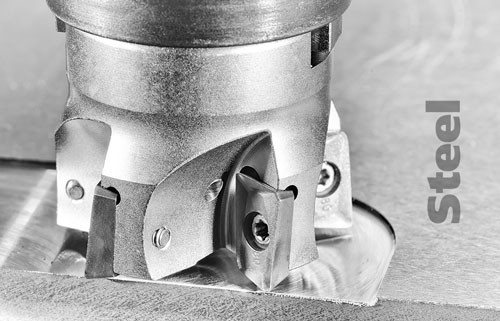Trace-A-Matic specializes in milling steel parts and assemblies using state-of-the-art CNC milling machines, 5-axis machining centers, and high-speed machining operations. Years of experience provide expert knowledge of cutting a wide range of steel alloys, their characteristics, and how the material group reacts when machined. Tool selection, cutting pass depths, mill feed and speed, chip control, and high-pressure coolant are critical in controlling heat generation, which can cause part movement and tool deflection during the milling process. This level of skill ensures world-class precision machining that meets or exceeds the most demanding tolerances. The innovative Trace-A-Matic team is always available to review your machining parts and guide you during the design process. Our goal is 100% customer satisfaction, providing AS 9100/ISO 9001:2015 certified quality machining resulting in timely turnaround and on-time delivery.

- Carbon steel contains carbon and iron, used in a wide variety of applications - mild steel having the least amount of carbon.
- Alloy includes nickel, copper, chromium, or aluminum, altering the strength and corrosion resistance.
- Stainless contain chromium and is known for corrosion resistance - 304 and 316 stainless steel alloys being the most common.
- Tool steel contains tungsten, molybdenum, cobalt, and vanadium, used in cutting and drilling equipment.
Steel milling is a fundamental process in metalworking industries, involving removing material from steel workpieces to achieve desired shapes and dimensions. Cutting tools play a pivotal role in steel milling, with carbide inserts and high-speed steel (HSS) end mills commonly used due to their robustness and wear resistance. Tensile strength, a critical steel property, influences cutting parameters such as feed rate and cutting speed to ensure efficient material removal without compromising tool integrity. Hardening steels, known for their enhanced hardness and wear resistance, require specialized tooling with durable cutting edges to withstand the high cutting forces. Achieving a smooth surface finish is essential in steel milling, necessitating precise control over factors such as cutting speed, depth of cut, and coolant usage. The carbon content of steel significantly impacts its machinability, with higher carbon content steels often requiring slower cutting speeds and lighter depths of cut to prevent tool wear and maintain dimensional accuracy. Depth of cut plays a crucial role in machining steel, with shallower cuts reducing cutting forces and prolonging tool life, while deeper cuts improve material removal rates. Successful steel milling demands a balance between cutting parameters, tool selection, and material properties to achieve optimal machining outcomes.
Material Types: castings, forgings, fabricated weldments, billets, bar stock, and plate
Other Metal Milling: aluminum, brass, copper, stainless steel, steel, and titanium